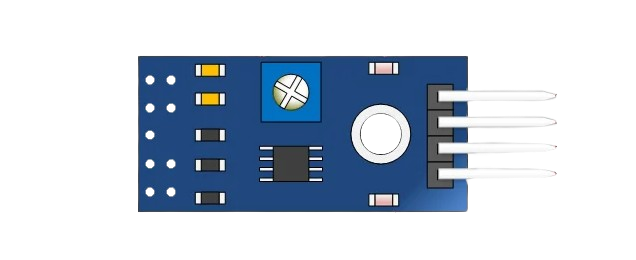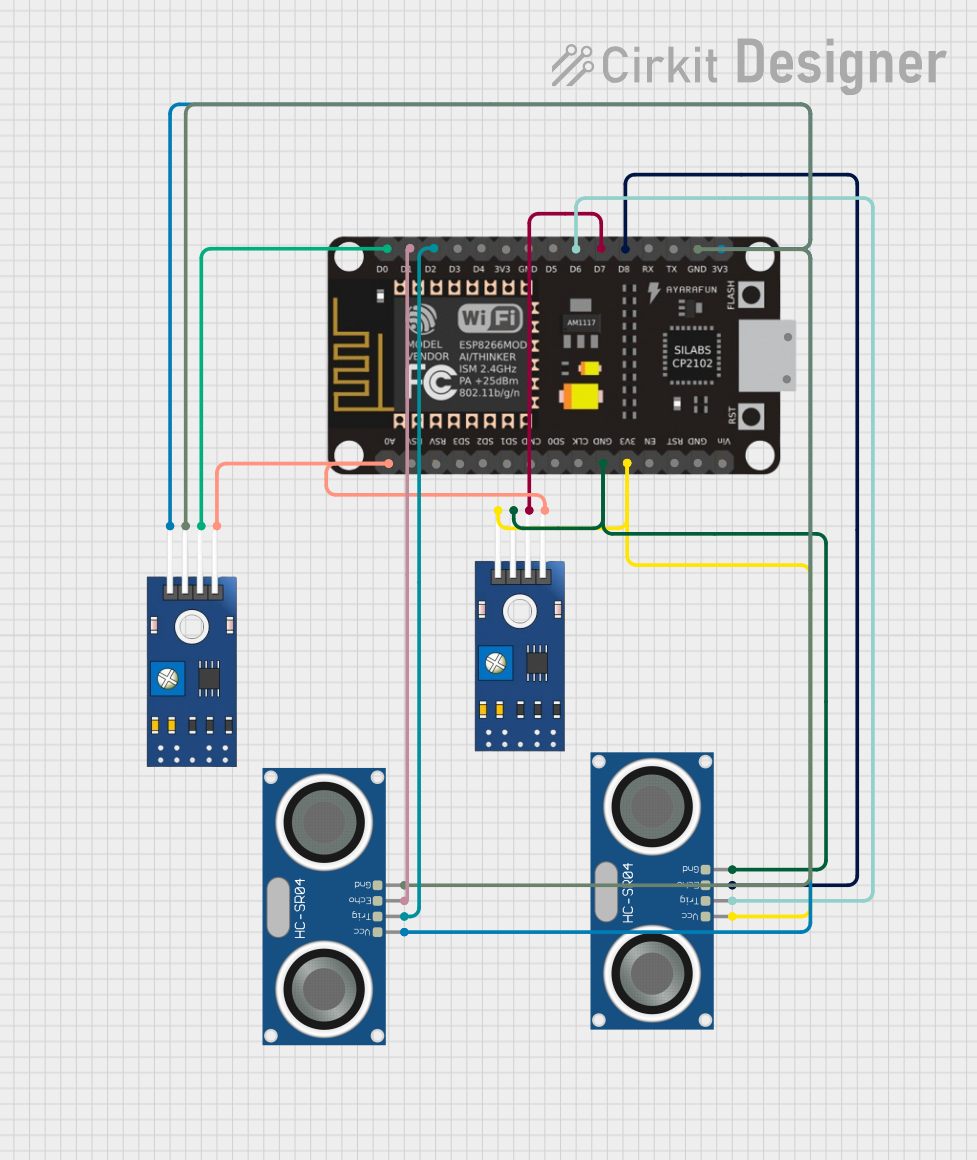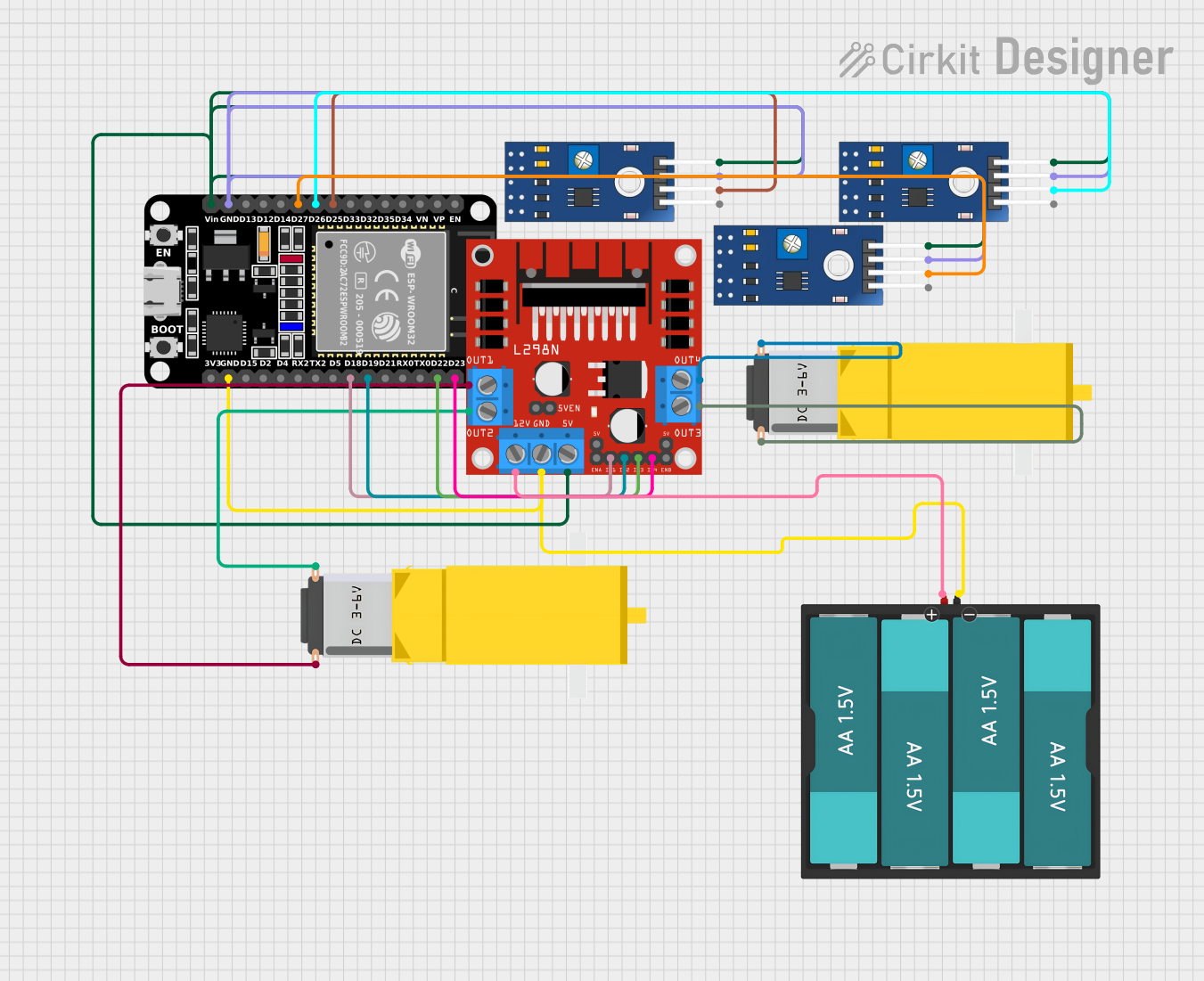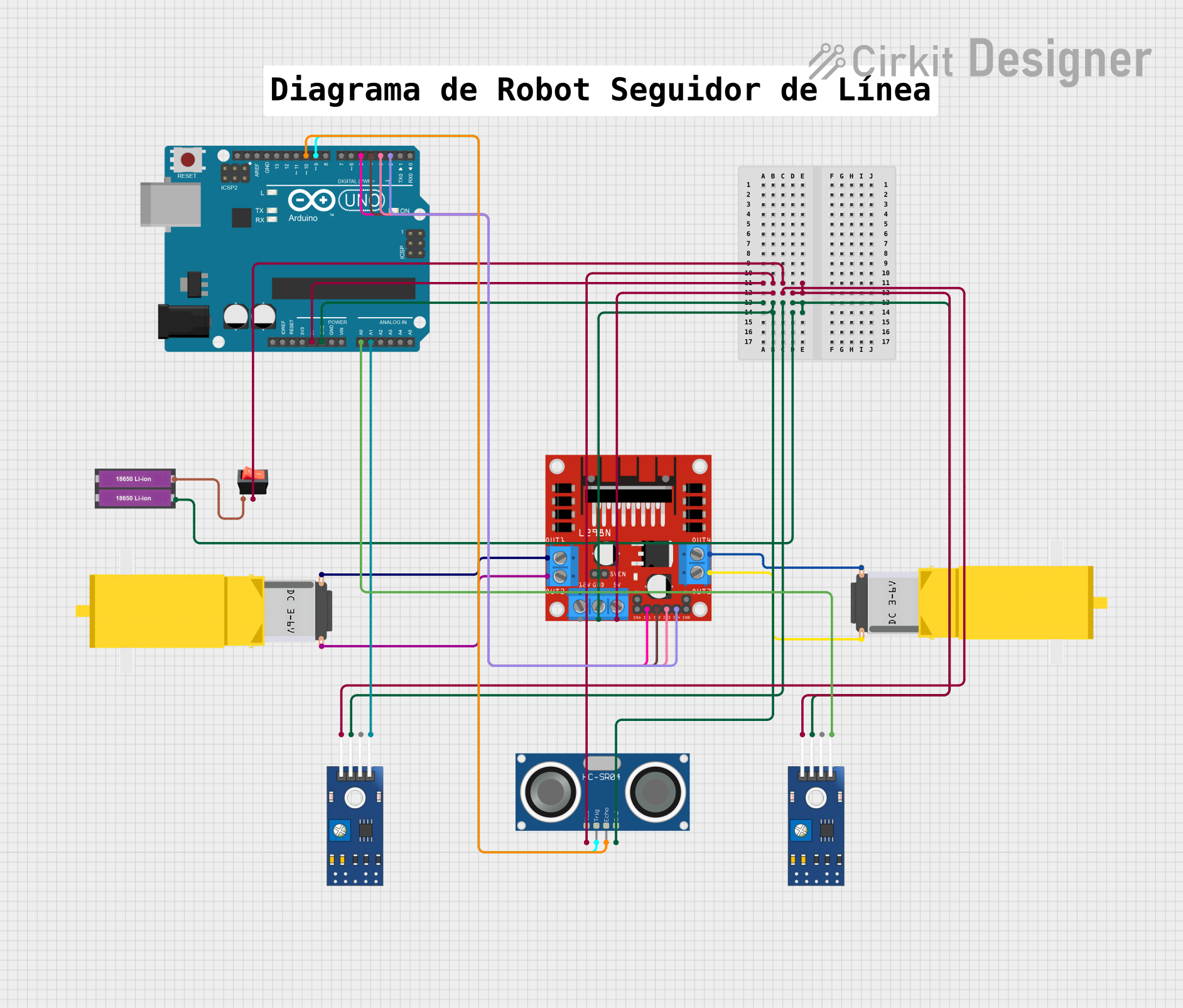
How to Use TCRT 5000 IR SENSOR: Examples, Pinouts, and Specs

 Design with TCRT 5000 IR SENSOR in Cirkit Designer
Design with TCRT 5000 IR SENSOR in Cirkit DesignerIntroduction
The TCRT 5000 is an infrared (IR) sensor module that integrates an IR emitter and a phototransistor in a single package. It is designed for detecting objects and measuring proximity by emitting infrared light and sensing the reflected light from nearby objects. The sensor is highly reliable and widely used in applications such as line-following robots, object detection, and proximity sensing.
Explore Projects Built with TCRT 5000 IR SENSOR

 Open Project in Cirkit Designer
Open Project in Cirkit Designer
 Open Project in Cirkit Designer
Open Project in Cirkit Designer
 Open Project in Cirkit Designer
Open Project in Cirkit Designer
 Open Project in Cirkit Designer
Open Project in Cirkit DesignerExplore Projects Built with TCRT 5000 IR SENSOR

 Open Project in Cirkit Designer
Open Project in Cirkit Designer
 Open Project in Cirkit Designer
Open Project in Cirkit Designer
 Open Project in Cirkit Designer
Open Project in Cirkit Designer
 Open Project in Cirkit Designer
Open Project in Cirkit DesignerCommon Applications:
- Line-following robots
- Obstacle detection in robotics
- Proximity sensing in automation systems
- Position encoders
- Reflective object detection
Technical Specifications
Key Technical Details:
| Parameter | Value |
|---|---|
| Operating Voltage | 3.3V to 5V |
| Forward Current (IR LED) | 60 mA (max) |
| Collector Current | 100 mA (max) |
| Peak Wavelength | 950 nm |
| Detection Range | 2 mm to 15 mm (optimal: ~10 mm) |
| Operating Temperature | -25°C to +85°C |
| Dimensions | 10.2 mm x 5.8 mm x 7 mm |
Pin Configuration and Descriptions:
The TCRT 5000 sensor has four pins. The table below describes each pin:
| Pin Number | Name | Description |
|---|---|---|
| 1 | Emitter (A) | Anode of the IR LED (connect to positive voltage) |
| 2 | Emitter (K) | Cathode of the IR LED (connect to ground) |
| 3 | Collector | Output of the phototransistor (connect to input) |
| 4 | Emitter | Ground for the phototransistor |
Usage Instructions
How to Use the TCRT 5000 in a Circuit:
- Powering the Sensor: Connect the IR LED anode (Pin 1) to a positive voltage (3.3V or 5V) through a current-limiting resistor (typically 220Ω to 330Ω). Connect the cathode (Pin 2) to ground.
- Phototransistor Output: Connect the phototransistor's collector (Pin 3) to a pull-up resistor (e.g., 10kΩ) and then to the positive voltage. The emitter (Pin 4) should be connected to ground.
- Signal Reading: The voltage at the collector pin (Pin 3) will vary depending on the amount of reflected IR light. A higher reflection results in a lower voltage, while no reflection results in a higher voltage.
Important Considerations:
- Optimal Distance: The sensor works best at a distance of 10 mm from the reflective surface. Ensure the object is within the detection range (2 mm to 15 mm).
- Ambient Light: Avoid using the sensor in environments with strong ambient IR light, as it may interfere with detection.
- Reflective Surface: The sensor performs better with highly reflective surfaces (e.g., white or shiny objects) compared to dark or matte surfaces.
Example: Connecting TCRT 5000 to an Arduino UNO
Below is an example of how to use the TCRT 5000 with an Arduino UNO for object detection:
// TCRT 5000 IR Sensor Example with Arduino UNO
// Connect the sensor's IR LED anode to 5V through a 220Ω resistor
// Connect the phototransistor's collector to A0 with a 10kΩ pull-up resistor
const int sensorPin = A0; // Analog pin connected to the phototransistor's collector
int sensorValue = 0; // Variable to store the sensor reading
void setup() {
Serial.begin(9600); // Initialize serial communication for debugging
}
void loop() {
sensorValue = analogRead(sensorPin); // Read the sensor value
Serial.print("Sensor Value: ");
Serial.println(sensorValue); // Print the sensor value to the Serial Monitor
// Add a small delay to avoid flooding the Serial Monitor
delay(100);
}
Notes:
- Adjust the pull-up resistor value if the sensor output is too weak or too strong.
- Use a multimeter to verify the sensor's output voltage during testing.
Troubleshooting and FAQs
Common Issues and Solutions:
No Output Signal:
- Cause: Incorrect wiring or loose connections.
- Solution: Double-check the wiring and ensure all connections are secure.
Inconsistent Readings:
- Cause: Ambient IR interference or improper pull-up resistor value.
- Solution: Shield the sensor from ambient light and adjust the pull-up resistor value.
Sensor Not Detecting Objects:
- Cause: Object is outside the detection range or has a low reflectivity.
- Solution: Ensure the object is within 2 mm to 15 mm of the sensor and has a reflective surface.
Overheating:
- Cause: Excessive current through the IR LED.
- Solution: Use an appropriate current-limiting resistor (220Ω to 330Ω).
FAQs:
Q1: Can the TCRT 5000 detect black objects?
A1: The sensor has difficulty detecting black or matte objects due to their low reflectivity. Use reflective tape or a brighter surface for better results.
Q2: What is the maximum detection range?
A2: The sensor can detect objects up to 15 mm away, but the optimal range is around 10 mm.
Q3: Can I use the TCRT 5000 with a 3.3V system?
A3: Yes, the sensor is compatible with 3.3V systems, but ensure the current-limiting resistor is appropriately chosen.
Q4: How do I reduce noise in the sensor readings?
A4: Use a capacitor (e.g., 0.1 µF) across the power supply pins to filter out noise and stabilize the readings.
By following this documentation, you can effectively integrate the TCRT 5000 IR sensor into your projects for reliable object detection and proximity sensing.